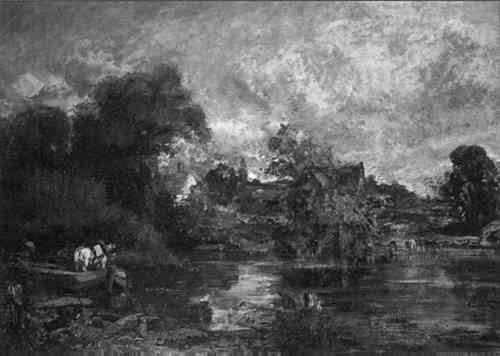INTERPRETING ARTIST'S INTENT IN THE TREATMENT OF JOHN CONSTABLE'S THE WHITE HORSE SKETCHMICHAEL SWICKLIK
4 CLEANINGBecause the overpaint was so heavy, it was not possible to ascertain the precise condition of the original painting prior to its removal. However, some clues were provided early in the cleaning that gave hope for a good result. The painting was covered not only with heavy, opaque repaint, but with a thick layer of markedly discolored varnish. Since it was a relatively simple task to remove this coating from the overpaint without affecting it, the varnish layer was removed first. The painting became brighter, but it did not appear technically any more like a painting by Constable. However, removing this varnish fortuitously revealed two areas where previous attempts at cleaning the painting had removed the overpaint layer to reveal what was beneath it. One area, in the upper right corner, showed the feathery, active brushwork of a Constable sketch in the clear, bright color that this area of the sky in the Frick version also displayed. Although this triangular area measured only 3 Painstakingly, the repaint was removed using organic solvents and the aid of a binocular microscope, one square inch at a time, over several years (1992–97, not working every day). To universal delight, a stunning, fresh, lively, and well-preserved fully realized sketch for the Frick painting was revealed (fig. 8, p. 366).
|
